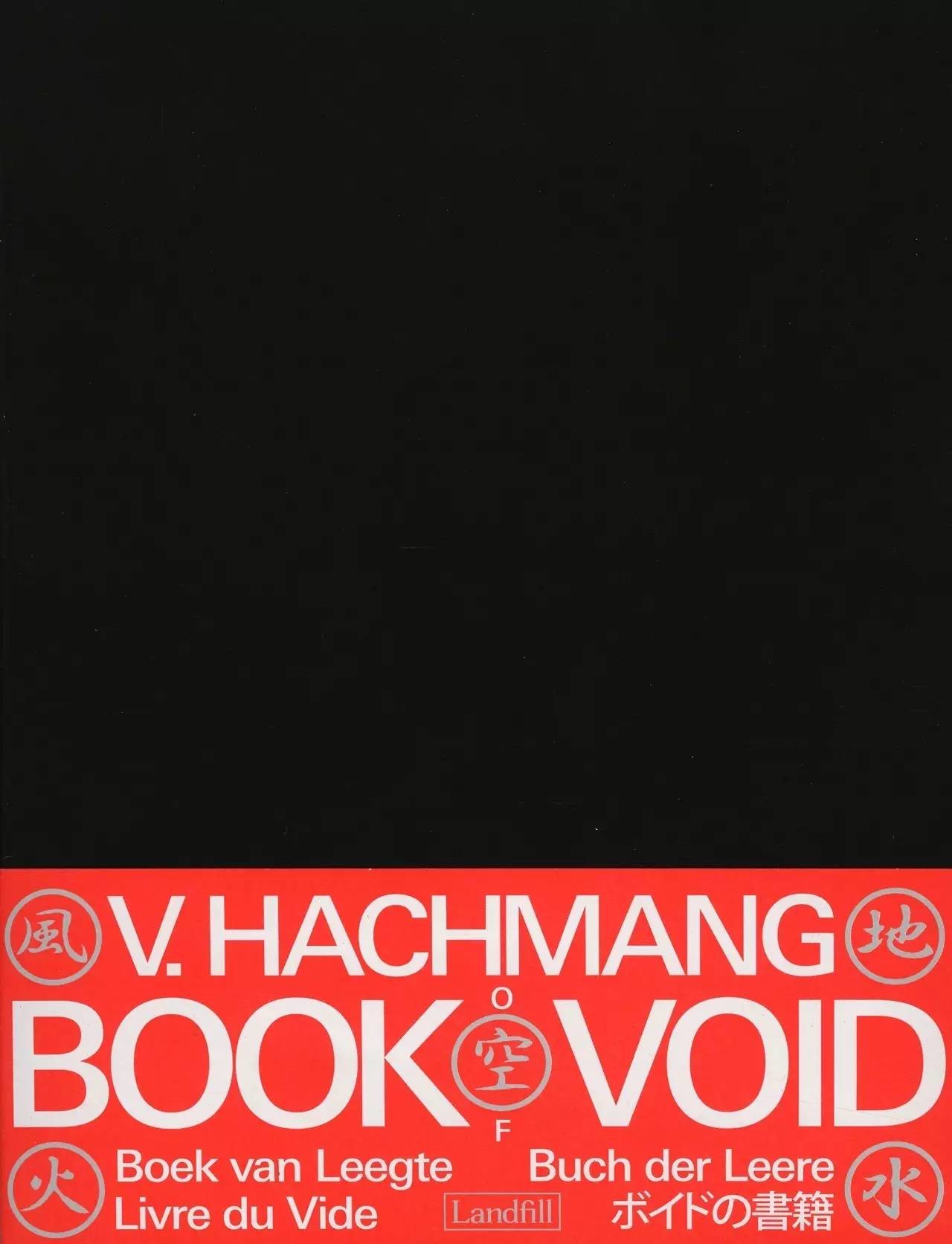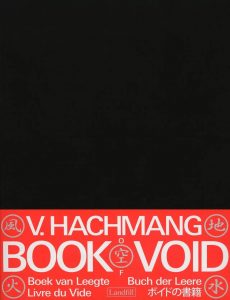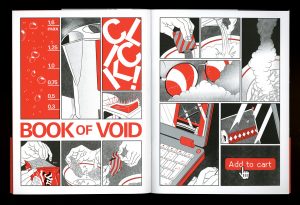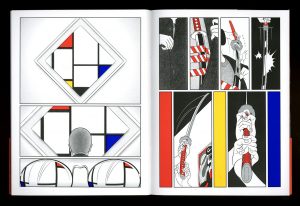The UK-based publisher Landfill Editions is best known in the USA for its anthology series Mould Map, but they also publish a selection of shorter works. I recently picked up a copy of Viktor Hachmang’s debut comic Book of Void. This is a 20-page comic with jet-black dust jacket and an obi band, and is printed mostly in red, silver, and black. The comic depicts the destruction of a piece of Piet Mondrian art, the Tableau No. IV, at the Stedelijk Museum Amsterdam.
Because of the comic’s emphasis on the museum and that experience of art, I find myself thinking about the dividing lines between “high” and “low” art, and wondering what Hachmang is trying to capture here.The violence that occurs in Book of Void, while the culmination of the book, feels like its central concern. At its core, Book of Void is asking a specific question about destruction; is it possible for destruction or violence against a piece of art to be beautiful? Ai Weiwei’s Dropping a Han-Dynasty Urn comes to mind. Certainly, for Ai Weiwei to make something new in that triptych, something had to be destroyed, and Hachmang seems to be
exploring this vein of inquiry.
Throughout the comic, a single unnamed, unspeaking protagonist goes about his daily life. There’s a minimalism to the character’s life – a mattress lying on the floor, a microwave, and a hot water kettle seem to be the character’s only major possessions. I’m struck by the way the book implies obsession and madness through isolation. The comic only ever shows another person when the main character has a katana delivered to his home after buying it on the internet. The book hums with the intensity of its mundanity, making it seem like spraying down and squeegeeing the bathroom is the most exciting thing happening.
There’s also a clear affinity expressed in the book for Japanese culture, even if it is morphed and second hand. Ramen (out of a packet) for a meal, a specific Japanese sword (bought online). We watch the character go to the convenience store and eschew Western products, and perhaps by association Western art.
Book of Void feels like a synthesis of other work– I see touches of Yuichi Yokoyama’s neo-manga, being primarily interested in movement and the passing of time and the depiction of space. Book of Void also has an intense and disquieting voyeurism, reminiscent of Jonny Negron’s comics work. The combination makes for an intense read.

If this is your first time reading a review at Sequential State, or your 100th, I’m glad you’re here. If you’re a repeat reader and come to Sequential State for criticism and commentary, please consider supporting us on Patreon. Thanks!




